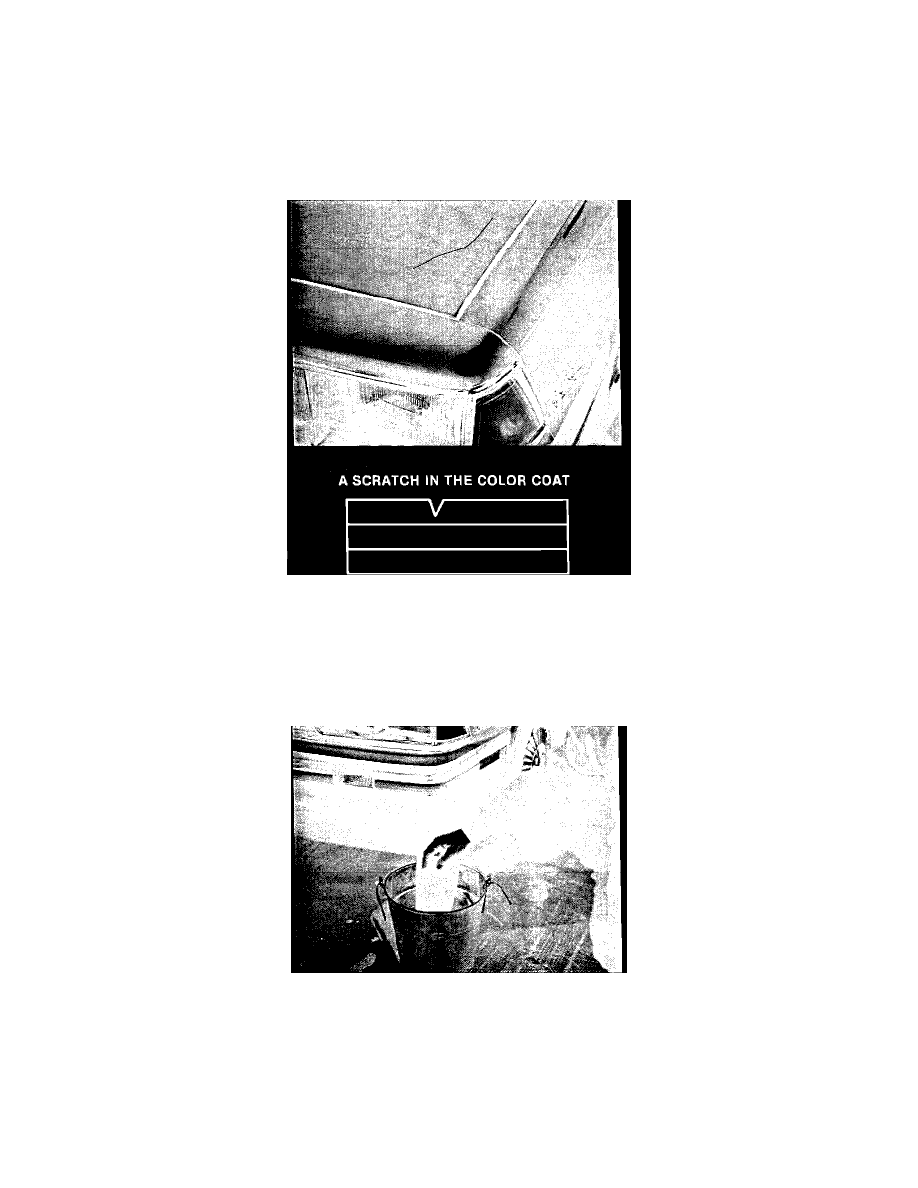Regal V6-231 3.8L Turbo VIN 8 4-bbl (1983)

Paint: Technical Service Bulletins
Procedure
The procedure has three basic steps:
1) color sanding, 2) compounding, and 3) polishing.
You can adapt the procedure to the particular paint problem you are trying to correct. Color sanding is the most drastic of the steps and may not be
necessary for every problem. You may be able to correct the problem just by compounding and polishing. Or maybe just by polishing alone. To begin,
pick a test spot and work backwards through the process. Polish the spot; if this doesn't remove the problem, compound the spot. If compounding doesn't
remove all traces of the problem, you must color sand the area to get the proper results.
A SCRATCH IN THE COLOR COAT
Let's take a severe problem, a scratch, and go through the process step-by-step.
1.
Color Sanding
^
Select a very fine grit color sanding paper, like 3M Imperial Color Sanding Paper (or equivalent) that leaves scratches only half as deep as
grade 600. Before starting, place your sandpaper in a bucket of clean water.
Soaking the sandpaper makes it more pliable. This makes it easier to fold around the sanding pad and reduces scratches from sharp sandpaper edges.
^
Next, wash the area to be repaired. Use a general purpose automotive cleaner and thoroughly rinse and dry the area.
